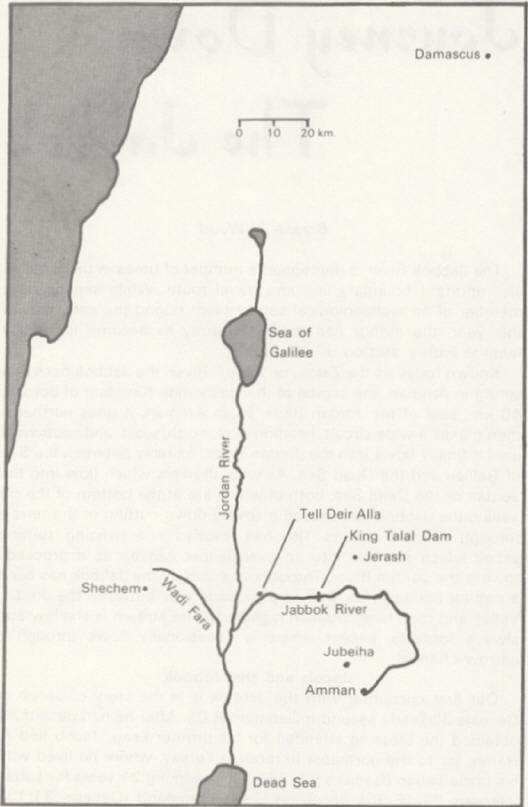Journey Down The Jabbok -- By: Bryant G. Wood
Journal: Bible and Spade (First Run)
Volume: BSP 07:2 (Spring 1978)
Article: Journey Down The Jabbok
Author: Bryant G. Wood
BSP 7:2 (Spring 1978) p. 57
Journey Down The Jabbok
The Jabbok River is mentioned a number of times in the Bible as an important boundary line and travel route. While serving as a member of an archaeological survey team during the early part of this year, the author had the opportunity to become intimately familiar with a section of the Jabbok.
Known today as the Zarqa, or “blue”, River, the Jabbok rises at a spring in Amman, the capital of the Hashemite Kingdom of Jordan, 40 km. east of the Jordan River. From Amman, it goes northeast then makes a wide circuit, heading east, north, west, and southwest until it finally flows into the Jordan River, halfway between the Sea of Galilee and the Dead Sea. As with all rivers which flow into the Jordan or the Dead Sea, both of which are at the bottom of the rift valley, the Jabbok has caused a severe down-cutting of the terrain through which it passes. This has resulted in a twisting, turning valley which narrows into an ever-deeper canyon as it proceeds toward the Jordan River. Throughout antiquity the Jabbok has been a natural boundary as well as a passage way between the Jordan Valley and the Transjordanian highlands. The stream is shallow and always fordable, except where it occasionally flows through a narrow channel.
Jacob and the Jabbok
Our first encounter with the Jabbok is in the story of Jacob in Genesis 32 (early second millennium B.C.). After he had deceitfully obtained the blessing intended for his brother Esau, Jacob fled to Haran, far to the northeast in modern Turkey, where he lived with his uncle Laban (Genesis 27, 28). After working 21 years for Laban (Genesis 29:15–30), Jacob, at God’s command (Genesis 31:13),
BSP 7:2 (Spring 1978) p. 58

Map showing the area where Jacob and Gideon traveled.
BSP 7:2 (Spring 1978) p. 59
packed up his two wives (Leah and Rachel), their two handmaids (Zilpah and Bilhah), his 12 children (Reuben, Simeon, Levi, Judah, Dan, Naphtali, Gad, Asher, Issachar, Zebulon, Dinah, and Joseph), and all of the flocks and herds he had acquired, and left for Canaan (vss. 17, 18).
It is not possible to follow precisely Jacob’s route to Canaan, but the general direction of his movements is clear. He first crossed the Euphrates river and headed south (verse You must have a subscription and be logged in to read the entire article.
Click here to subscribe
